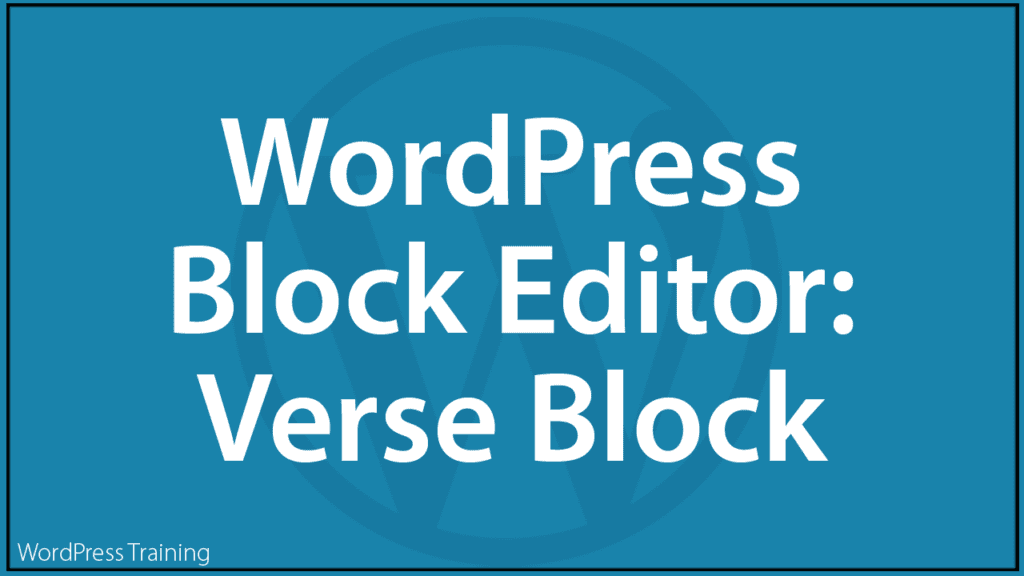WordPress Block Editor – Verse Block

This tutorial is part of our series on How To Use The WordPress Block Editor (Gutenberg).
- To learn more about using the WordPress block editor interface, go here: The WordPress Block Editor – Content Area
- To learn more about using blocks, see this tutorial: How To Use WordPress Block Editor Blocks
***
Verse Block – Description
The Verse block lets you add special text to your content with special spacing formats, like poems, verses, song lyrics, etc.
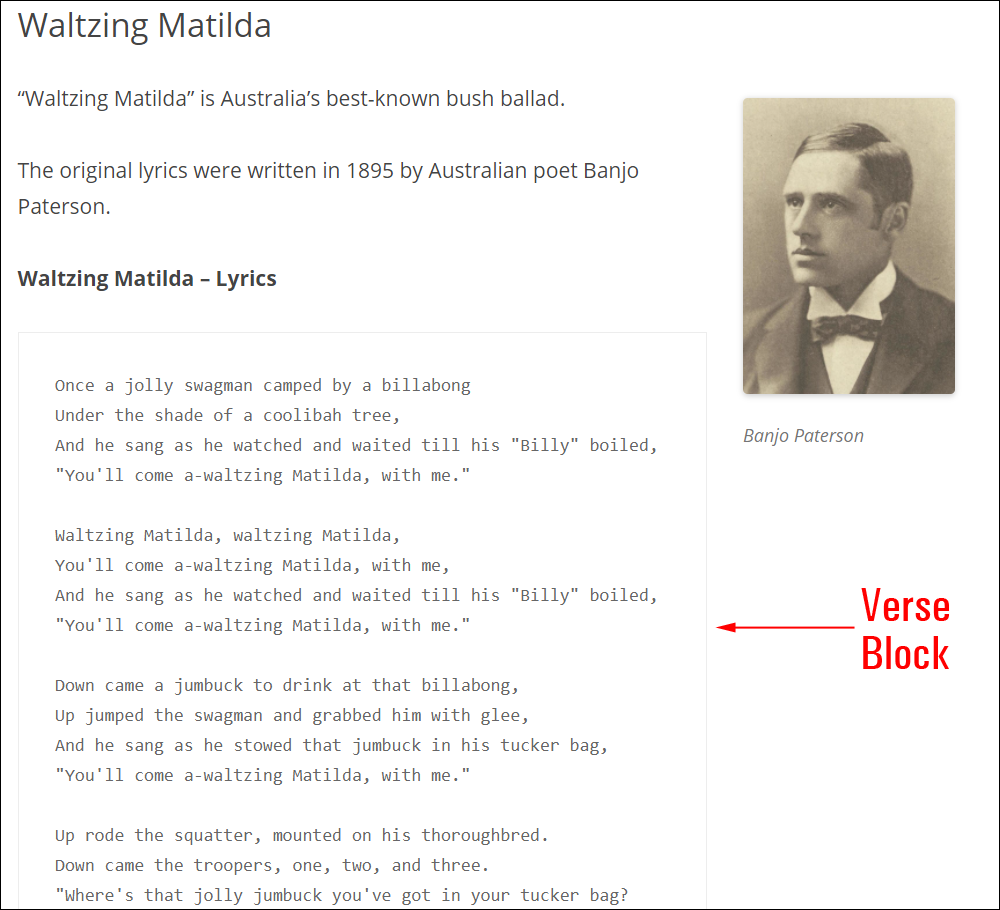
How To Use The Verse Block
In this section, we’ll cover:
- How to add a Verse block to your content.
- How to edit and configure your Verse block and block settings.
- How to remove the Verse block from your content.
For more details on using blocks (e.g. how to move blocks around your content), see this tutorial: How To Use Blocks.
Adding A Verse Block
To add a Verse block to your content:
- Either:
- Click on the ‘Add Block’ tool in the Editing Toolbar section and select the Verse block (in Most Used or Text section),
- Add the Verse block in the Content Area.
- Type or paste in your content.
- Use the tools in the Verse Block Editor or Block Settings section to edit and format your Verse.
Let’s go through the above steps.
First, create a new post or page or open an existing post or page and either:
Click on the Add Block tool and select a Verse block…
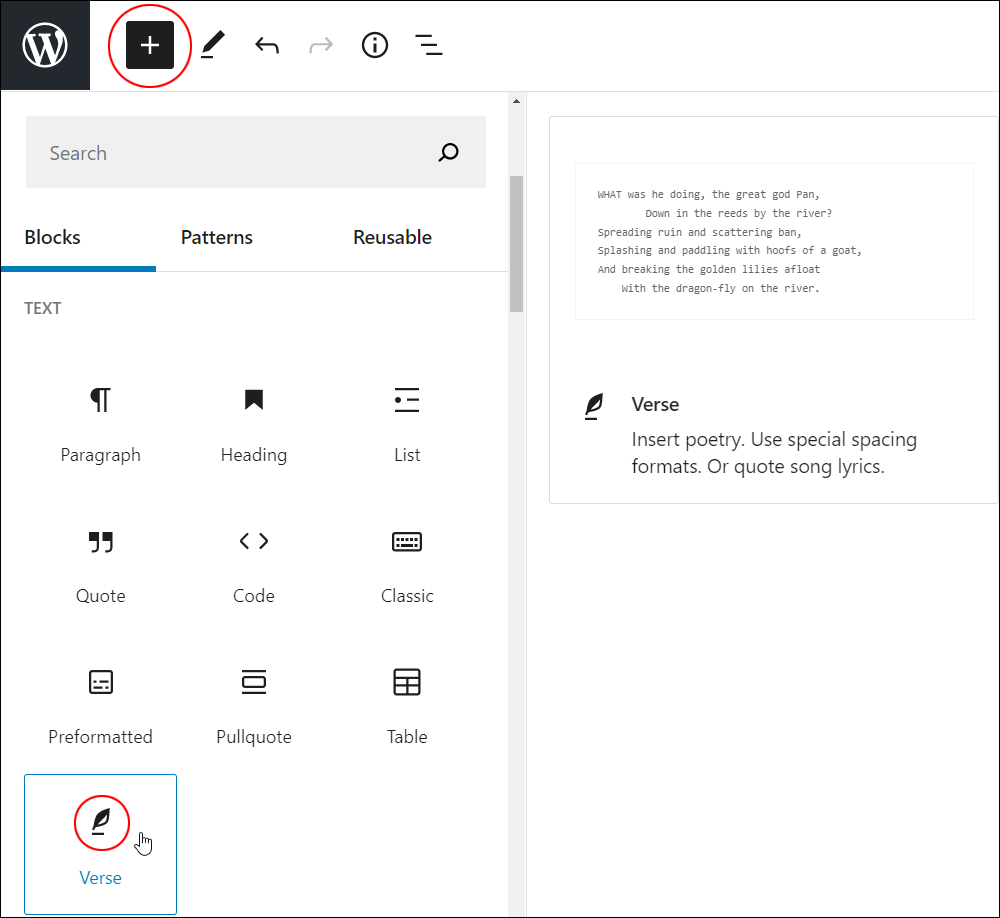
Or, select a Verse block using the Inserter tool in the Content Area.
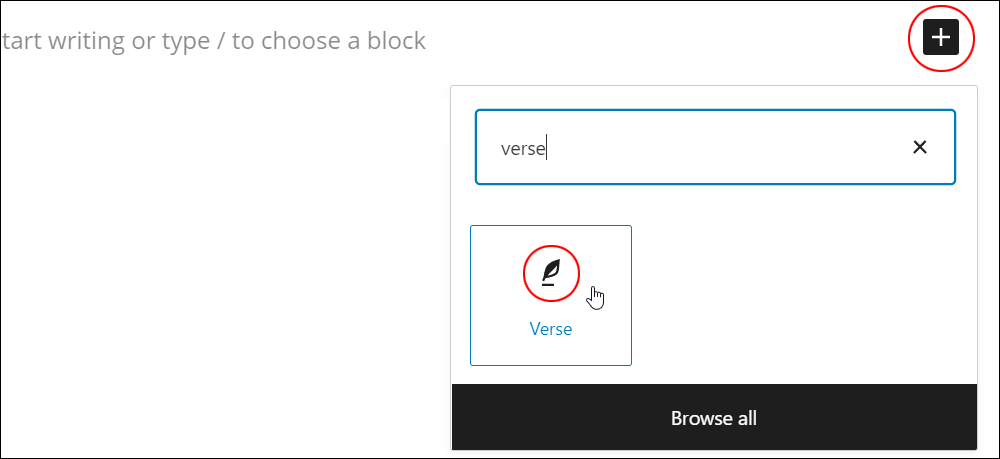
Either of the above methods will add a Verse block to your content.

After adding a Verse block to your content, you can type or paste in your verse.
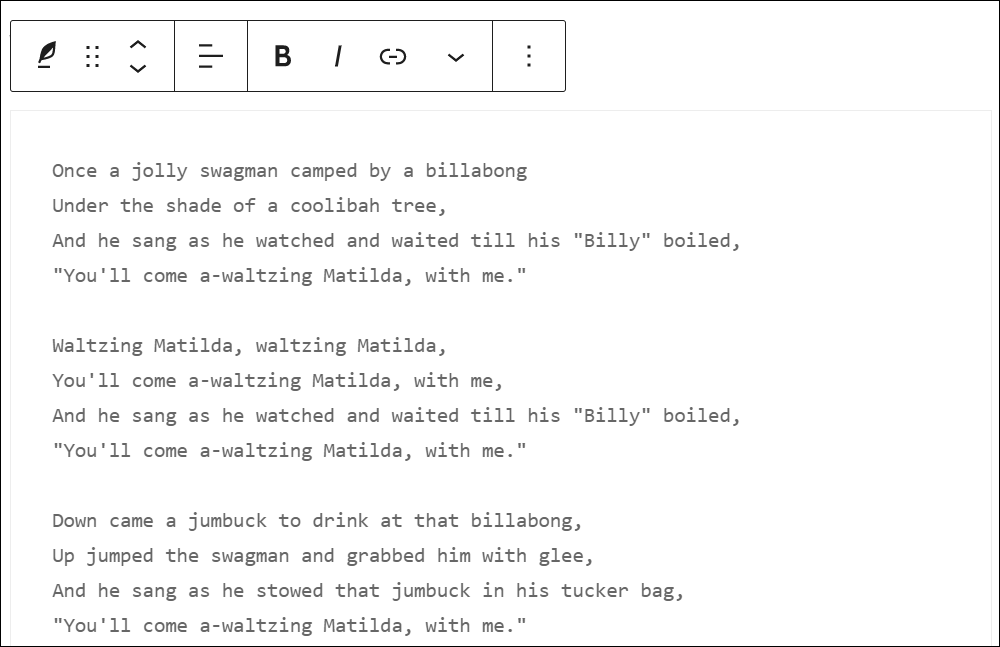
After adding a verse to your content, you can:
- Edit and configure your block’s settings,
- Save, publish, or update your post or page.
How To Edit A Verse Block
To edit a Verse block:
- Click inside the Verse block to select it.
- Use the Block Editor tools to:
- Change the alignment of the verse text.
- Format the text (bold, italics, etc.).
- Add a hyperlink to the verse.
- Use the Block Settings to change the style of the verse using CSS (Cascading Style Sheets).
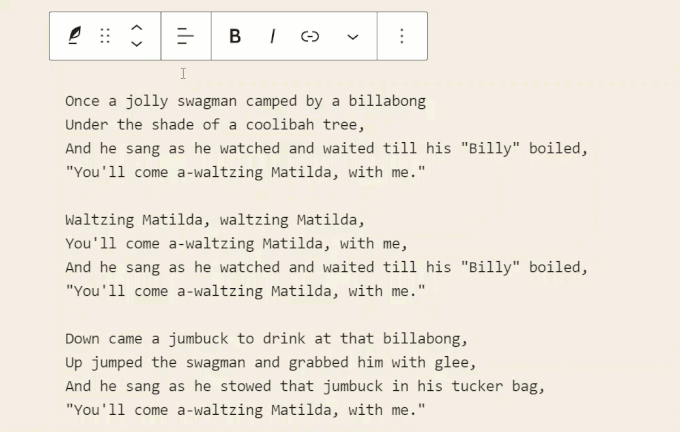
If the Verse block is too narrow, a horizontal scroll will display so you can continue reading the verse to the end of each line.

Remember to update and publish your post or page to save your settings.
How To Remove A Verse Block
To delete or remove a Verse block from your content:
- Click inside the Verse block to select it.
- Select the ‘More Options’ tool in the Block Editor.
- Click on ‘Remove block’.
- This will remove the Verse block from your content.
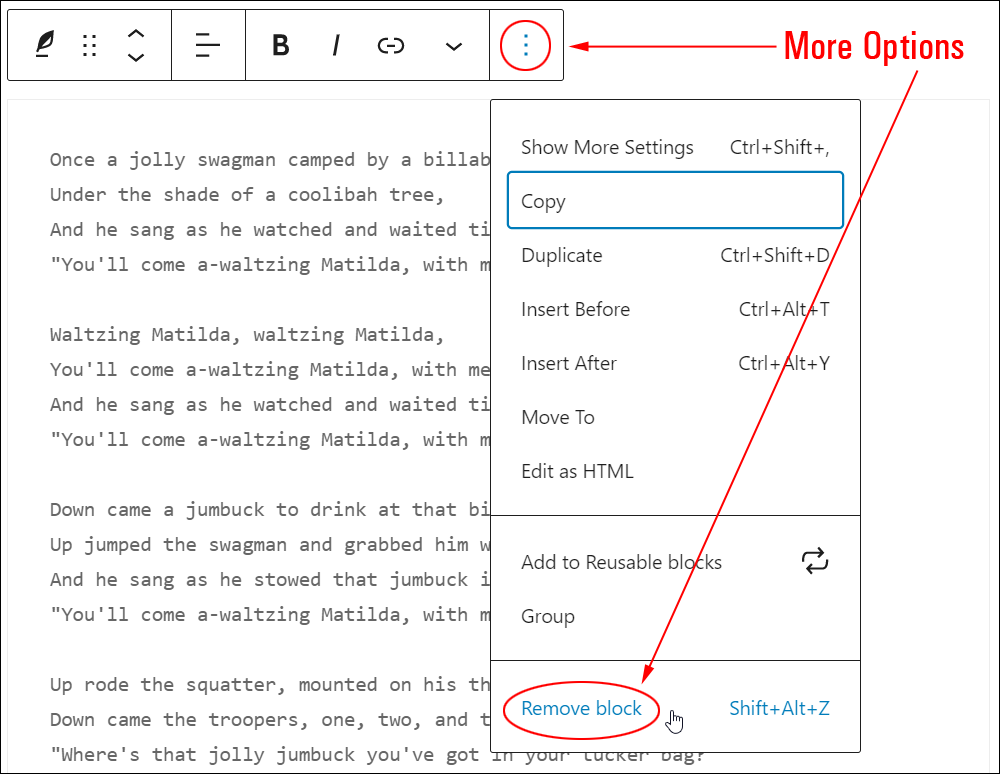
Additionally…
- You can reposition your block using the ‘Move Up’ and ‘Move Down’ arrows or the Drag and Drop handle tool (if you need help with this step, see our tutorial on How To Use Blocks).
- You can also convert a Verse block into a Reusable block.
Verse Block Tools, Options & Settings
The Verse block includes tools, options, and settings for:
- Verse Block Editor
- Verse Block Settings
Verse Block Editor
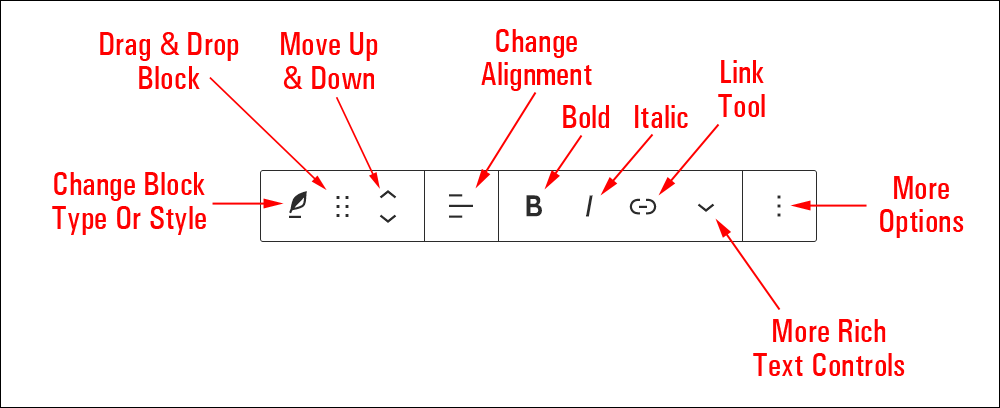
The Verse Block Editor includes tools that let you perform the following operations:
- Change Block Type (See ‘Verse Block – Additional Info’ section below.)
- Drag & Drop Tool
- Move Up and Down Tool
- Change Alignment Tool
- Align text left
- Align text center
- Align text right
- Bold – Add bold formatting to your text.
- Italic – Add italicized formatting to your text.
- Link Tool – Link and unlink text in your verse.
- Custom URL – Paste a URL or type a search term to bring up a list of posts, pages, or custom post types on your site containing your search term.
- Clicking on the Link settings button brings up the following options:
- Open the link in a new tab (on/off).
- Apply button. Once the Apply button is clicked, your link displays the following additional options:
- View the link.
- Edit the link.
- Delete the link.
- Clicking on the Link settings button brings up the following options:
- Custom URL – Paste a URL or type a search term to bring up a list of posts, pages, or custom post types on your site containing your search term.
- More Rich Text Controls – See How To Use Blocks to learn more about using rich text control settings.
- More Options – See How To Use Blocks to learn how to use this section.
Verse Block Settings
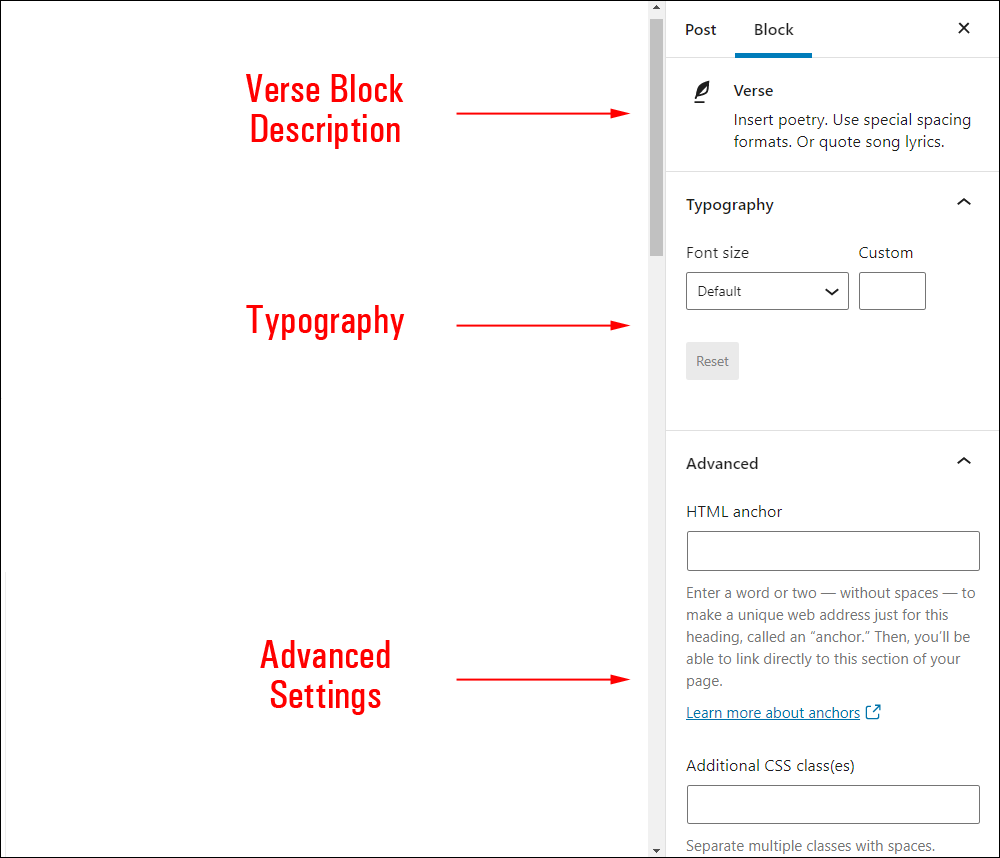
Verse block settings include:
- Block description area
- Typography
- Font Size – Depending on the theme used, font sizes may include the following:
- Default
- Extra small
- Small
- Normal
- Medium
- Large
- Extra large
- Huge
- Gigantic
- Custom
- Custom font size
- Value field – Enter a value in points
- Reset – Resets font size to default.
- Font Size – Depending on the theme used, font sizes may include the following:
- Advanced Settings
- HTML Anchor – Create a unique web address to send users directly to this block using a unique jump link URL. To learn more about using HTML Anchors, see our tutorial on How To Use Blocks.
- Additional CSS Class(es) – This field lets you add multiple CSS classes to your block separated with spaces. This allows you to write custom CSS and style the block as you see fit. Note: This requires having knowledge of CSS (Cascading Style Sheets).
Verse Block – Additional Info
The Verse block can be converted into the following block types:

Additionally:
Installing plugins or themes on your site may also add new functionality, options, or settings to the Verse block.
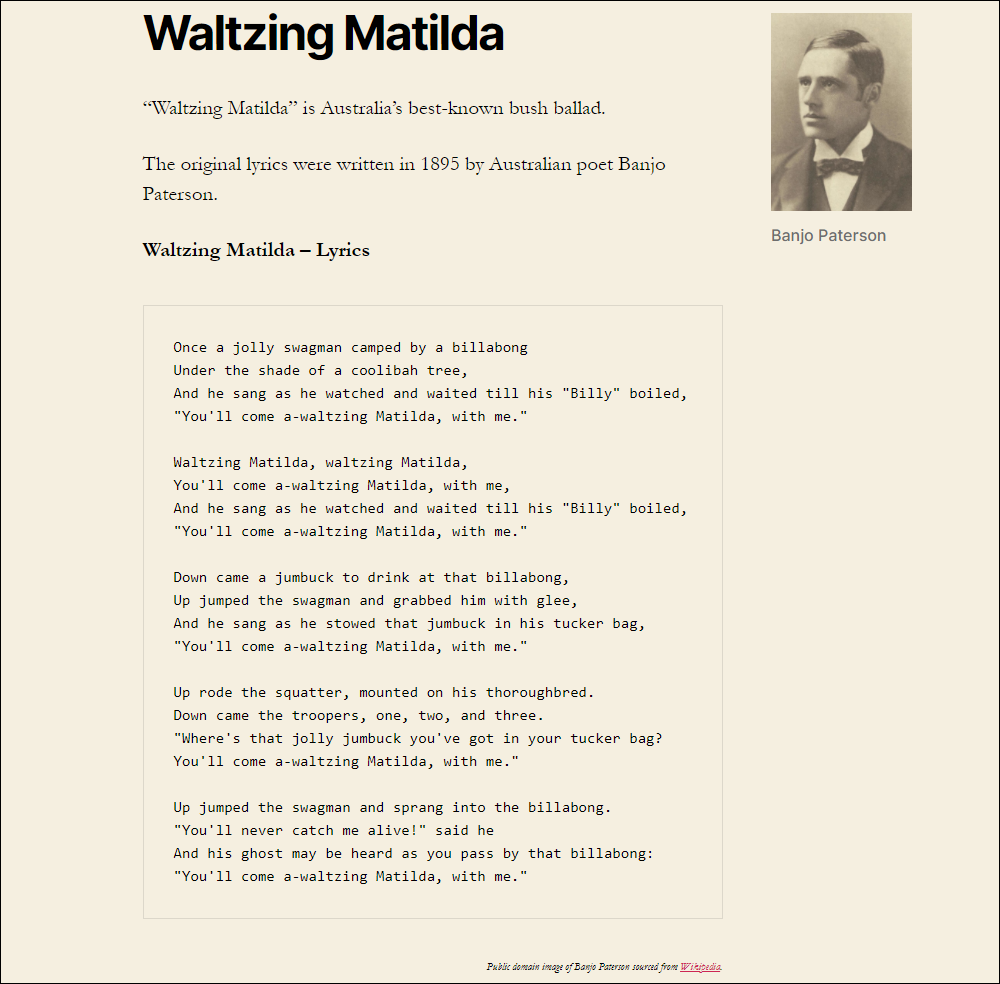
Congratulations! Now you know how to use the WordPress content editor’s Verse block.
To learn how to use other blocks, go here: WordPress Block Editor – How To Use Blocks
***
Public domain image of Banjo Paterson sourced from Wikipedia.
Updated: July 5th, 2024
